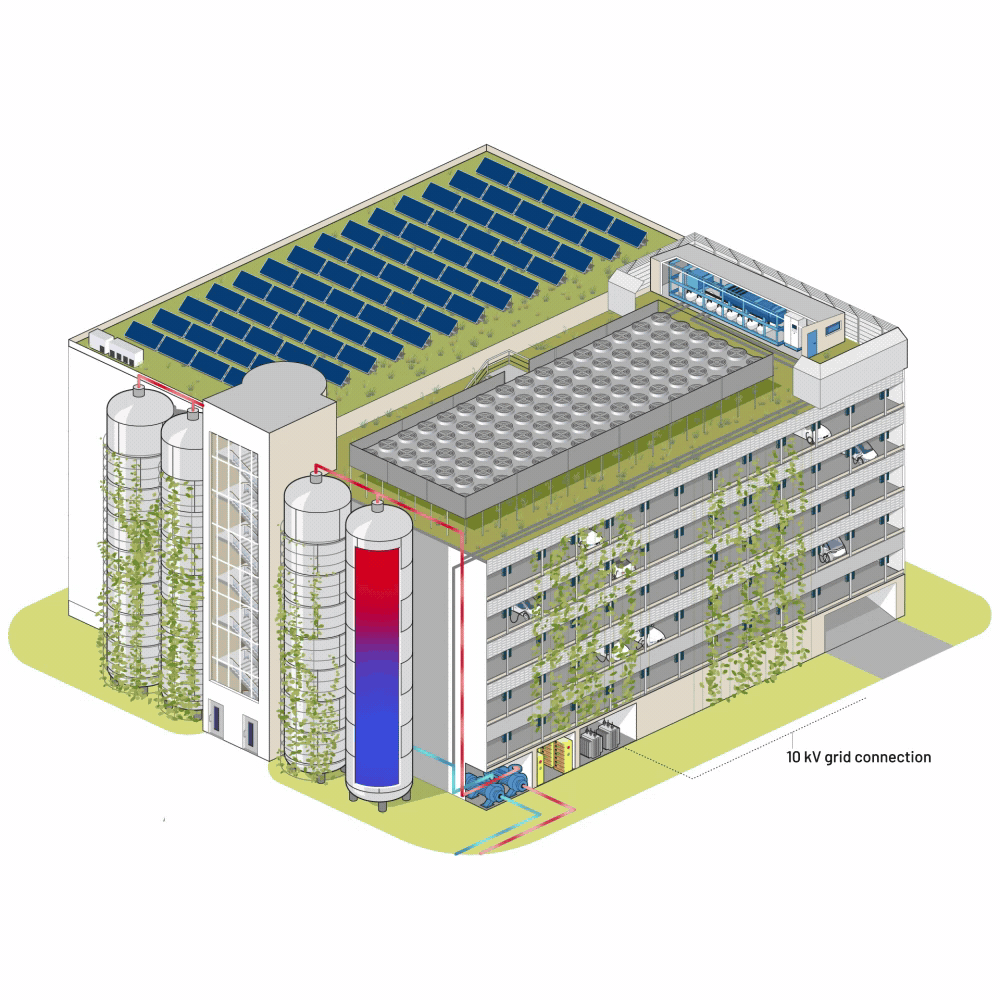Kornquartier
In 2025, the first car park energy storage system, developed by us and patent pending, will be built in the Kornquartier neighbourhood of Bremen.This concept combines parking, charging infrastructure, photovoltaic systems, and energy storage, and thus provides an answer to many questions concerning the energy transition in both existing and newly built residential areas. These include:
- How do we replace oil and gas heating systems?
- Aren’t air and water pumps much too noisy?
- How can we integrate surpluses from volatile energy sources into the local energy market?
- But what to do if the wind doesn’t blow and the sun doesn’t shine?
- Where can we charge all our EVs?
- And won’t this be way too expensive?

The Kornquartier is a car-free neighbourhood in Bremen with 430 apartments, 55,000 sqm of residential and commercial space and a thermal energy requirement of 3 million kWh/a. We are installing a car park storage system with the following specifications:
- Parking facilities with spaces for 150 cars and 150 bicycles
- Car park area 800 sqm
- Charging facilities for up to 75 cars
- 0.6 MWp of PV installations in the neighbourhood
- 2.0 MW air-water heat pump output
- 0.5 MW power-to-heat module
- Battery storage 0.5 MWh electric
- Large heat storage tank with 600 cubic metres and 28 MWh thermal storage capacity
- Compliance with the German Building and Electromobility Infrastructure Act (GEIG)
Our answer to energy transition issues
The car park storage facility enables us not only to charge vehicles with renewable electricity, but also to heat homes in both a climate-friendly and cost-effective way. Because we store heat and charge batteries exactly when the wind blows or the sun shines. Doing so, we are already today reducing electricity procurement costs by > 25 %. This means we can provide electricity for charging and heating at a significantly lower cost. Furthermore, this approach increases the integration of renewable energies into the German electricity grid and reduces the number of shutdowns of wind turbines and photovoltaic systems due to oversupply.